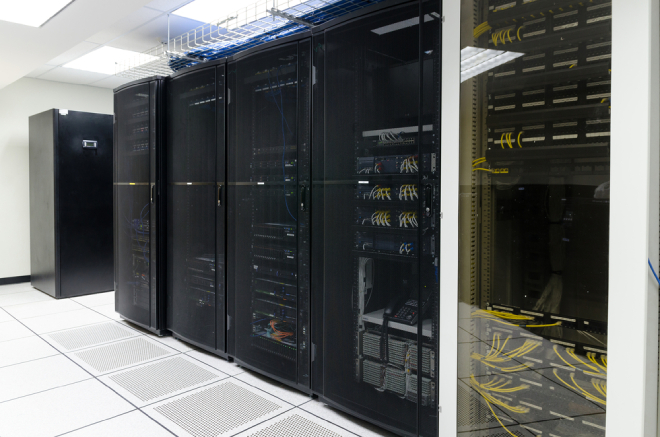The data centre has traditionally been the realm of service providers, telcos and big corporates with large, critical workloads and no tolerance for downtime. However, as higher speed connectivity has become more affordable and the proliferation of co-location providers brings competition and choice it’s become a viable option for any business to host their servers in the data centre.

So, why would you choose the data centre over keeping your equipment on-premises?
1. It’s not as expensive as you might think
Since the early 2000s the data centre market has become incredibly competitive. Global providers and boutique small scale data centres are vying for business from the local IT company and government organisations alike. Most providers can allocate space for a single server through to multiple racks and price points vary depending on the location, grade of data centre and amount/type of resources you need.
In Australia, a single server can be co-located in a data centre for as little as $100 a month. Full, quarter and half racks can be found on the market for as low as $400 a month and many even include some power and connectivity.
When comparing the cost of co-location with your on-premises options its important to consider the hidden factors. A single average business server can consume as much as $200 of power a month and that’s before you factor in the cost of running the air conditioner 24×7 to keep it cool.
Some of the costs you should factor into your comparison are:
-
-
- Power cost of your servers on your electricity bill.
- Power cost of your air conditioning system on your electricity bill.
- The cost of a good quality uninterruptible power supply (UPS) and the routine battery replacements.
- Connectivity, especially faster connectivity, usually requires fibre which may mean build costs to your site. These services are likely already in the data centre.
-
We usually find that once you factor in all these hidden costs, the data centre is incredibly competitive on price for far more value.
2. Security
Security is always a very strong focus for data centre providers. Facilities are surrounded by cameras which are monitored 24×7, many have on site guards, almost all employ biometric access control such as fingerprint scans and the people who have access including customers are usually background checked.
For most businesses, the server equipment and data it stores is crucial to the business. Keeping this equipment locked away in a secure location should be front of mind. However, it’s not uncommon for thieves to target servers and backup hard drives when breaking and entering a business premises. We’ve even seen some particularly determined thieves steal the UPS at one of our client’s offices.
Your equipment and data will be far more secure locked away in a monitored and managed data centre with an advanced access control system.
3. Availability & Business Continuity
Many people think of data centres in terms of high-speed internet access but in reality their focus is on one thing – availability. The power supplies, UPS, generators and air conditioning systems are all built and managed to ensure the lights stay on and the environment remains stable no matter what. It’s next to impossible to achieve this level of availability for your servers and network when they are are on-premises quite simply because of the enormous capital costs you’d need to meet.
Business continuity is a huge advantage that comes with co-location. Your business and IT systems are no longer dependant on your office. Flood, fire or power outages don’t affect all of your offices at once (because your equipment isn’t in the head office any more) and you can always look to send staff home or have them work remotely using systems still humming along in the DC.
4. Scalability
Although not a major concern for most SMB and education businesses, scalability can be a big problem for on-premises setups. You may run out of space for server racks or, more likely, power available in the building to run more equipment.
Data centres have the capacity to provide additional space, power and cooling as you need it.
5. Access to better connectivity options
If you have ever sourced quotes for high speed connectivity at your office, you’ll know the biggest expense is usually the cost of building the fibre optic cabling from the street into your site. We’ve seen quotes as high as $150,000 for the fibre build alone. Now, while most carriers will amortise that cost over the contract term for you it still adds significantly to your OPEX cost and usually leads to customers choosing lower quality or speed connectivity to keep within budget.
Data centres are usually carrier neutral and have many service providers already connected or ‘on-net’ in their facilities. Connecting to these providers is as simple as ordering a cross connect from your rack to them and having the provider provision the service.
6. Longevity of your equipment
Computer equipment is expensive and sensitive. Data centres provide a consistent and stable temperature, humidity and power supply (including voltage and frequency). You might be surprised to know how much these numbers, including things you think would be stable like frequency, change in your on-premises server room throughout the day.
A consistent and controlled set of environmental specs will increase the lifespan of your systems, reduce failure rates and protect your data and investment.
Caznet has a presence in six data centres across Adelaide and provides co-location, private cloud and network connectivity options to the SMB, enterprise and education sectors.






